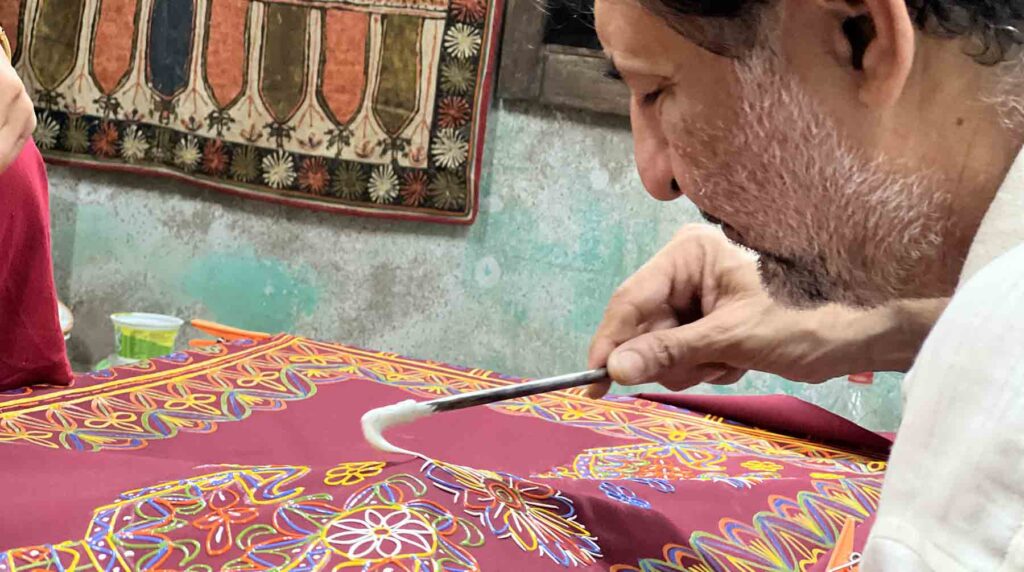Three kinds of Traditional Rogan painting: Origins, Techniques, and Preservation
Rogan painting is deeply connected to Buddha’s disciples and originates from Bihar, India. It traveled from Bihar to Bamiyan with Buddha’s disciples and later reached Gujarat. Research conducted by UNESCO and Japanese scientists uncovered evidence of this connection in Bamiyan. In 2008, the oldest oil painting, created by Buddha’s disciples using the ‘drying oil technique,’ was discovered in the Hindu Kush Valley.
This art form, known as Rogan art or Rogan Chhap, derives its name from the Sanskrit word Rogan, meaning ‘work with color.’ In the US and European countries, it is referred to as the ‘drying oil technique.’ Rogan painting was once prevalent throughout Gujarat, with Bhabhar in Banaskantha regarded as its hub, often called the “Manchester of Rogan painting.” It was also practiced in Rajasthan, Uttar Pradesh, and Madhya Pradesh. However, today it survives only in Madhapar, Kutch, preserved by the dedicated efforts of Ashish Kansara.
Three kinds of Traditional Rogan Painting
Three types of techniques have been renowned worldwide throughout history. The first is ‘Traditional Rogan Painting,’ the second is ‘Traditional Nirmika Rogan Painting,’ and the third is ‘Traditional Varnika Rogan Painting.’ Most artisans primarily work with the first technique.
Traditional Rogan Painting (Rogan Chhap)

Oil is boiled for 5 to 6 hours to thicken it. The thickened oil is mixed with chalk powder and color to form a paste, which is then submerged in water. This paste, called Rogan, is prepared for painting. It is applied to the artist’s palm and manipulated with an iron rod to create intricate designs.
The artist works on one side of the fabric, applying the design using a freehand technique. The fabric is folded and pressed gently for a few minutes to imprint the design symmetrically on the other side. After unfolding, the fabric is left to dry in direct sunlight. Once dry, additional dots and lines are added for decoration.
Traditional Nirmika Rogan Painting (Nirmika Rogan Chhap)

The process begins with preparing the Rogan paste, similar to traditional Rogan painting. A brass mold, called a biba, is filled with Rogan paste. The mold is pressed onto the fabric using a wooden stick, transferring the design in a manner similar to block printing. This method is repeated across the fabric to create an all-over pattern. The fabric is then dried in sunlight.
Traditional Varnika Rogan Painting (Varnika Rogan Chhap)

Rogan paste is made using the same method as in traditional Rogan painting. The paste is spread evenly across the entire fabric using a brush, unlike the half-side application in Rogan painting. Golden zari or mica powder may be added to enhance the design. The decorated fabric is dried in sunlight to complete the process.
Rogan painting: Preservation
Today, Ashish Kansara from Madhapar, Kutch, is the sole artist practicing all three forms of traditional Rogan painting.






One Comment